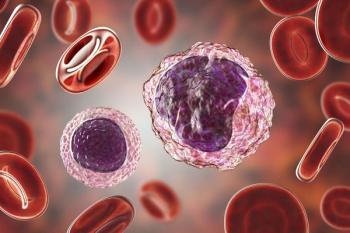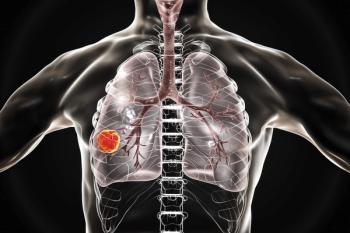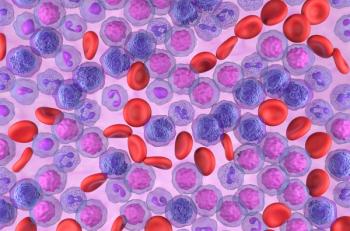
Miami Breast Cancer Conference® Abstracts Supplement
- 42nd Annual Miami Breast Cancer Conference® - Abstracts
- Volume 39
- Issue 4
- Pages: 36-37
87 Elacestrant Plus Abemaciclib Combination in Patients With Estrogen Receptor-positive, HER2-Negative Advanced or Metastatic Breast Cancer
Background
After first-line endocrine therapy (ET) plus CDK4/6 inhibitor (CDK4.6i) in estrogen receptor–positive/HER2-negative (ER+/HER2–) metastatic breast cancer, tumors develop resistance to intrinsic alterations in the cell cycle or PI3K/AKT/mTOR pathways or to acquired ESR1 mutation that emerges in up to 50% of patients. In the phase 3 EMERALD trial (NCT03778931), elacestrant significantly prolonged progression-free survival (PFS) vs standard-of-care (SOC) ET with manageable safety in patients with ER+/HER2– metastatic breast cancer previously treated with ET plus CDK4/6i (ESR1-mutated tumors: HR, 0.55; 95% CI, 0.39-0.77; P = .0005; all patients: HR, 0.70; 95% CI, 0.55-0.88; P = .0018). In patients with ESR1-mutated tumors that received prior ET plus CDK4/6i at 12 months or more, the median PFS with elacestrant was 8.6 months vs 1.9 months with SOC ET. The rationale for combining elacestrant plus abemaciclib is to overcome different resistance mechanisms and enable an all-oral treatment option. Elacestrant plus abemaciclib is being evaluated in the phase 1b/2 ELECTRA (NCT05386108) and ELEVATE (NCT05563220) trials. This pooled analysis reports updated safety and preliminary efficacy in patients with prior ET+CDK4/6i exposure (excluding abemaciclib).
Materials and Methods
Eligible patients must have received prior ET for metastatic breast cancer, including 1 or more lines of ET, with or without CDK4/6i (excluding abemaciclib), or chemotherapy (ELECTRA only). Safety was evaluated in all patients who received elacestrant plus abemaciclib. The efficacy evaluable population includes patients from ELECTRA phase 1b.
Results
As of October 15, 2024, 57 patients received elacestrant plus abemaciclib. In 42 patients who received the recommended phase 2 dose (RP2D; elacestrant at 345 mg once daily plus abemaciclib at 150 mg twice daily), the majority had 1 to 2 lines of prior ET (97%), prior CDK4/6i (100%), prior chemotherapy (16%) and visceral metastases (71%). At the RP2D, the most common all-grade adverse effects (AEs; ≥20%) were diarrhea (n = 35, 83%; 5% grade 3), nausea (n = 27, 64%; 5% grade 3), vomiting (n = 17, 41%; 2% grade 3), fatigue (n = 15, 36%; 5% grade 3), neutropenia (n = 14, 33%; 26% grade 3), anemia (n = 10, 24%; 7% grade 3), constipation (n = 9, 21%; 0% grade 3) and decreased appetite (n = 9, 21%; 0% grade 3). No grade 4 AEs were observed. In efficacy-evaluable patients from ELECTRA phase 1b, median PFS was 8.7 months in all patients (n = 27), 8.7 months in patients with prior ET in metastatic breast cancer (n = 24), 8.7 months in ESR1-mutated tumors (n = 11), 7.2 months in ESR1 mutation not detected (n = 12). Median PFS by dose level was 8.7 months (elacestrant 345 mg daily + abemaciclib 150 mg twice daily, n = 12), 7.5 months (elacestrant at 345 mg daily plus abemaciclib 100 mg twice daily, n = 7), and 8.4 months (elacestrant 258 mg daily plus abemaciclib 100 mg twice daily, n = 8).
Conclusion
The safety of elacestrant plus abemaciclib was consistent with the known profile of abemaciclib plus standard ET. Elacestrant plus abemaciclib showed clinically important efficacy regardless of ESR1-mutation status. Elacestrant has the potential to become the ET backbone to enable an all-oral treatment option, delay chemotherapy or antibody-drug conjugate–based regimens. Phase 2 is ongoing.
Articles in this issue
Newsletter
Stay up to date on recent advances in the multidisciplinary approach to cancer.


















































































